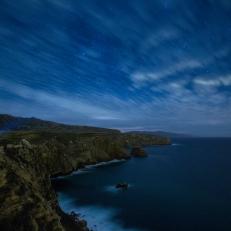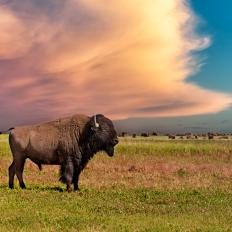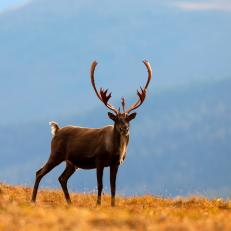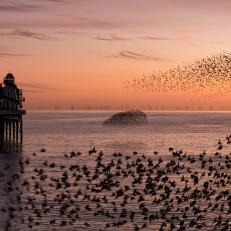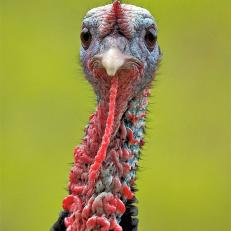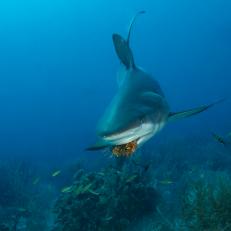Fat Bears Take Over Alaska in 2020
"Every year I go north to photograph these amazing bears through July and September. Each bear will consume between 75-150lbs of salmon a day for almost three straight months in preparation for winter hibernation and in hopes of becoming Fat Bear Champion."
Click through the Fat Bear Week photo gallery from international wildlife photographer Greg Piper.
The Katmai Region of Alaska is unlike any region on Earth when it comes to conservation and grizzly bears.
Here, bears are protected and they thrive on rich healthy diets of wild berries and salmon from Bristol Bay.
Fat Bears don’t start off as fat bears, they start off as hungry spring cubs like this guy here photographed with his sockeye salmon prize — stolen right from the mouth of mom and his two siblings.
These cubs must fight for their share. Even within the protected borders of Katmai National Park & Preserve, they may be protected from man, but they are not from other bears. In the hierarchy of the bear world, nothing comes without a fight and for the three years these cubs live with mom, they learn a timid bear is a hungry bear.
Returning fat bear finalist, bear number 151 aka “Walker,” catches a red sockeye salmon at the falls on Brooks River.
It’s very rare to capture a red sockeye jumping up the falls, it’s even more rare that a bear would fish the top of the falls this late in the season. It just so happens old “Walker" was crossing the top of the falls, paused to look down for a minute and this guy, as destiny would have it, jumped right into his waiting mouth.
They say the early bird gets the worm…well the early bear gets “fat.” One of the best times to feed is early morning. As the sun rises, so do the bears.
A fat bear candidate spends time in the river early, often, and late. These bears have a regimen of eating, sleeping, eating, sleeping that lasts 24 hours a day.
The reigning runner up from 2019 and returning heavy weight, designated bear #775 “Lefty” is my personal favorite.
His fishing style makes him a joy to watch and his distinctive droopy left ear earns him his name.
Every other bear leaving the river always precedes his entrance to Brooks Falls. Once “Lefty” picks his spot, in this case the top of the falls, then and only then will the other bears slowly and cautiously rejoin the feast. This battle-hardened bear has earned his place at the top of the chain and his many visible scars prove it.
Even the most healthy fat bears don’t come close to winning the annual competition. This one thousand pounder is a mere middleweight in the ring of “Fat Bear” candidates.
Bears are naturally curious and I captured this image with a remote camera rig, allowing me to be 150 feet away. This cautious mom came over to investigate the situation before allowing her cubs to relax on the beach while she fished near the mouth of the Kulik river in Katmai.
Her cubs also decided to check out my camera, just before trying to eat it and dragging it 50 yards down the beach.
The feast starts well before September and bear #909 is getting an early start at the first sight of silver salmon in the falls. She won’t get in the "Fat Bear Week" bracket without getting the jump on the fish.
After grabbing her catch she strolls over to her favorite rock to sever up this delicious feast of skin, eggs, and protein.
If there was a fat bear cub category, then this little guy would take the prize. These cubs and their mom traveled over 25 miles to the Kulik river to feed on the last run of sockeye in the area.
What may come as a surprise, studies show that salmon are not a grizzly bear's first choice for food. In fact they prefer berries, especially blueberries, and grass to salmon.
Bears are simply “opportunity” eaters and salmon are common in Katmai and widely available in Alaska, making them the easiest and most effortless dinner to plate.
One of my favorite bears is this mammoth #480 “Otis.” Just look at the stare in his eyes.
His position near the top of the Brooks Falls hierarchy is firmly unopposed. He fishes at the far end of the falls and simply waits for his meal to come to him. From his shaded position under the trees, he has a clear view of the sun basked river allowing him to see the salmon as they await their turn to attempt a falls jump. He simply steps out and snags his meal of choice.
He is consistently in the "Fat Bear Week" finals and I have never witnessed another bear challenge him or his preferred spot.
Like “Lefty,” he is rapidly aging and the loss of his canine teeth signals his impending demise and rapid decline in the hierarchy, as it does with all bears.
“Walker,” aka bear #151, makes the catch on top of Brooks Falls.
An image of a silver jumping into an awaiting hungry mouth is easy to capture at Brooks Falls, a red sockeye is almost impossible. I was luckier than “Walker” on this sunny September day.
"The Catch," an iconic image at Brooks Falls. Hundreds of thousands of photographers flock to Katmai every year to attempt to capture this image.
The raw cycle of life in the wild.
The immense power of such beauty.
The sustainability of our natural world.
Salmon are simply “the” vital element in Alaska’s diverse ecosystem.
Alaska’s fishery brings in over 3 billion dollars to the state's economy annually, providing 32,900 jobs with over 1,000 of those jobs in bear viewing alone. Future generations of fat bears are under threat from human development projects disrupting this pristine wilderness. No salmon, equals no fat bears. And without fat bears, what would October really be?
This image encompasses a bear's life. This guy is well on his way to achieving “Fat Bear Week” status in Katmai. I captured this image at the end of September as the unlimited buffet continues and these beautiful bears prepare for the long winter ahead.
Heavy is the weight of the crown, but not nearly as heavy as the “Fat Bear Week” champion who will wear it.
Have an Epic 2020 “Fat Bear” Week my friends.









